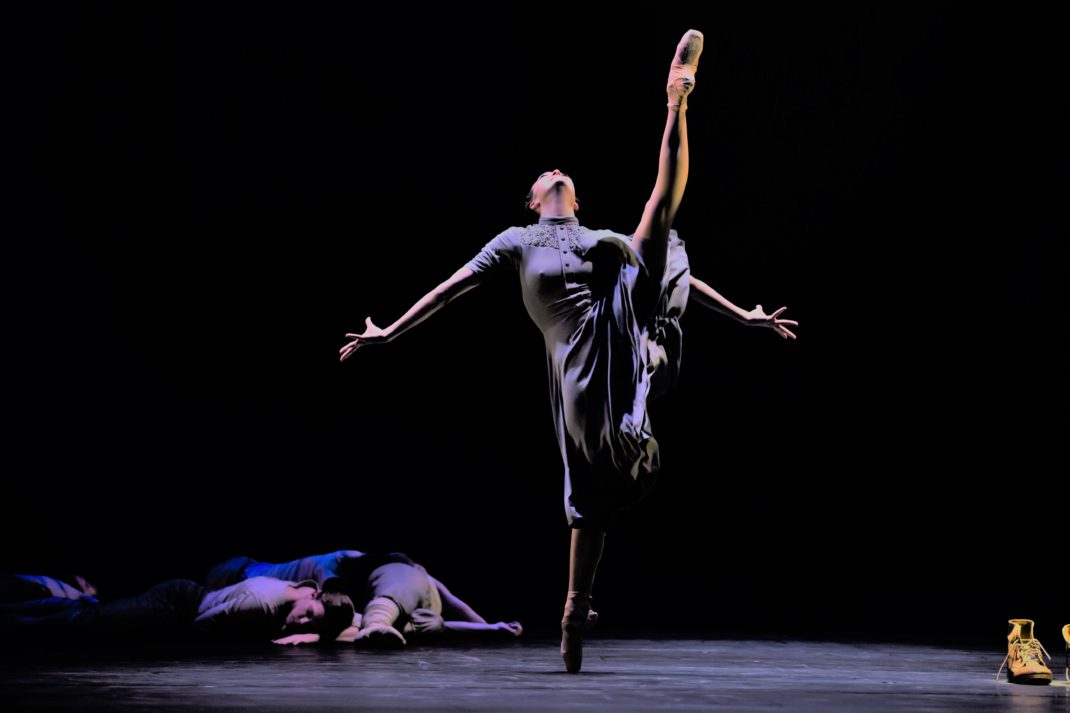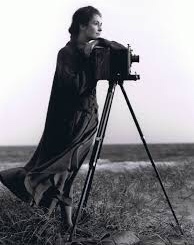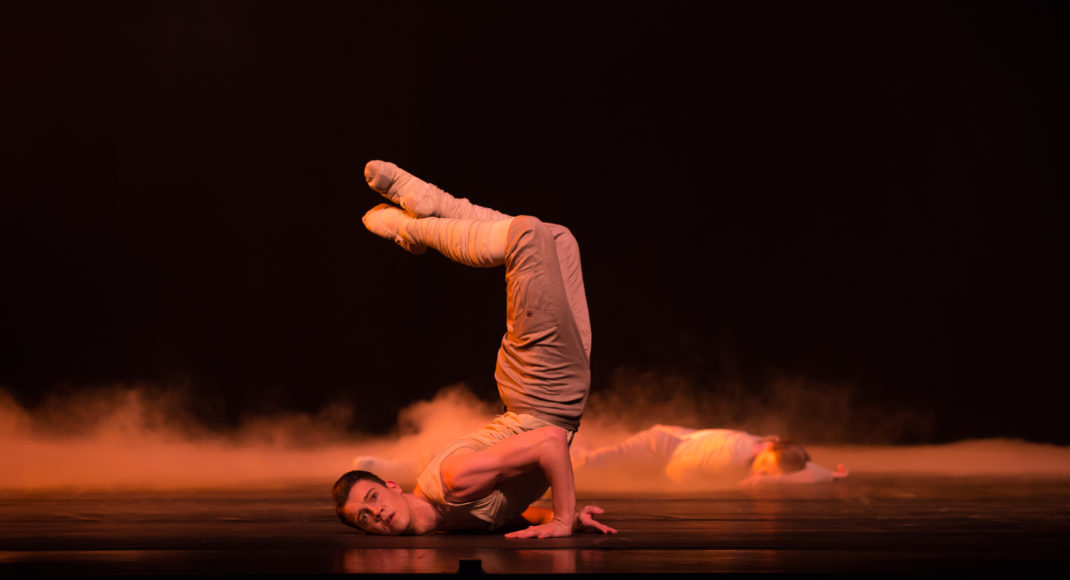Today, 25 April 2020, I watched Royal New Zealand Ballet’s streaming of Andrew Simmons’ Dear Horizon and Neil Ieremia’s Passchendaele, two works that reflected on the Anzac spirit. In these days of ‘digital stages’, ‘digital seasons’ and the like, I wondered why nothing similar had happened in Australia. Or did something escape my attention?
I have to admit to wondering what could have been streamed in Australia. For a start, in 2016 Queensland Ballet programmed an exceptional triple bill of three works under the title Lest we forget. Two were by non Australian choreographers and neither of them was exactly right for the occasion. But one was Natalie Weir’s We who are left. It would have been perfect. As my review of We who are left was published on the London-based site, Dancetabs, I am reproducing the text here for those who may not have seen the Dancetabs review.
Natalie Weir’s Lest we forget. Queensland Ballet, July 2016 (review first published on Dancetabs, 31 July 2016)
It was, I believe, Agnes de Mille who exhorted choreographers to aim to make an impact in the first 30 seconds of their works if they wanted to harness the interest of an audience. Choreographer Natalie Weir did exactly that in Queensland Ballet’s triple bill program, Lest We Forget, a program honouring the ANZAC soldiers of World War I. Weir’s work, We who are left, begins in darkness. One by one five male dancers are revealed, standing in individual pools of light. As we watch each man is joined by a woman and we can almost hear the women shouting ‘Don’t leave me’, ‘Stay’, ‘I love you’ as they throw themselves into the arms of their partners, cling to them, and reluctantly tear themselves away as their partners ready themselves to leave for the war zone. Instant emotional involvement is the only possible reaction. The five couples then lead us on a journey of parting, fighting, death, survival, longing, and memories of what was and what might have been.
Choreographically the work is outstanding throughout. After the strongly emotional opening scene, the men engage in their war activities. At first their movements have a quality of military precision to them. But as this section proceeds they throw themselves around the performing space in athletic leaps as they become more and more bound up in the process of war. Then, dramatically, an upstage screen lifts and four of the five men walk slowly backwards into the grey recesses that are revealed. The screen descends and just a single soldier, ‘The man who lived’ danced by Jack Lister, remains onstage. A lyrical pas de deux between Lina Kim and Camilo Ramos follows. It is a duet recalling memories of past times and is filled with Weir’s signature pas de deux style in which bodies tip, dive, twist and wrap around each other.
Perhaps the choreographic highlight, however, comes at the moment when Clare Morehen, ‘She who was left’, stands onstage with a pair of soldier’s boots in front of her. She dances around them, sometimes with sharp pique-style movements that suggest agony, sometimes with extended legs and stretched arms that suggest a range of other emotions. Then, surprisingly, she is joined by her man, Shane Wuerthner. They dance together but separately. Morehen stretches out to him but they never touch. They kiss but their lips never meet. He lies on the floor and she steps over him crisscrossing her way along the body. They are astonishing moments and present a totally different take on memory from what we saw from Kim and Ramos. Later, the other four women enter with pairs of boots and poignantly place them on the floor. But nothing can equal the dream-like moments we spend with Morehen and Wuerthner.

The work is danced to selections from Benjamin Britten’s War Requiem Opus 66 and Weir has chosen largely from those sections of the score that include the spoken word in the form of poetry by Wilfred Owen. The score pounds relentlessly and adds a separate level of drama to the overall work. David Walters lighting design is spectacular throughout beginning with that striking downlighting in the opening moments, through to brooding lighting washing across the stage as the men find themselves in the act of war, and on to further pools of light highlighting the women as they survey the empty boots of those who did not return. Costumes by Noelene Hill are perfectly of the period and neutral in their colours.
We who are left has an innate simplicity—five couples, five sets of boots, basically a grey colour scheme. That’s about it on an obvious level. Yet it is masterful in its ability to communicate general thoughts about the effects of war, while at the same time conveying a sense of individuality. It is like a dagger in the heart with its theatricality, its choreographic sensibility, and its dramatic power. It is nothing less than a knockout.
*****************************************
Then there’s Stephen Baynes’ 1914 made for the Australian Ballet way back in 1998. One of my ongoing gripes is that 1914 has never been revived. I am told by some that it ‘had problems’, but I thought it was an exceptional work. In 1998 I was writing for Dance Australia and my review appeared there. Here is what I wrote of this work.
Stephen Baynes’ 1914. The Australian Ballet, April 1998 (review first published in Dance Australia, June/July 1998)
Stephen Baynes’ new work, 1914, opened with many expectations riding on it. It was Baynes’ first evening-length work, his first narrative ballet and the first time he had taken a novel, David Malouf’s Fly away Peter, as specific inspiration. But most of all, it was a major Australian work: the Australian Ballet’s first ever full-length work with choreography, score and design all commissioned from Australian artists.
As a collaboration, 1914 achieves much. On the most obvious level, the ballet (and the book) follows a simple narrative centring on the lives of three Australians, Jim Saddler, Imogen Harcourt and Ashley Crowther. Jim and Ashley enlist and go to France to fight in the Great War and the lives of the three are torn apart and changed forever. But the collaborative team of Baynes, Graeme Koehne (composer), Andrew Carter (set and lighting designer) and Anna French (costume designer), have added to the simple story something of the poetic and impressionistic qualities of Fly away Peter. Through the contributions of this creative team the story becomes a journey from light to dark and, finally, back to light again with Imogen, who is left alone in the final moments of the ballet to resolve her—and our—feelings of loss and grief.
In his choreographic definition of the characters, Baynes’ greatest success is with Jim, whose movements are both unaffected and expansive. Especially in the first solo, with its emphasis on clean lines and movements that highlight an open chest and outstretched arms, Jim emerges as laconic but free-spirited. On opening night Steven Heathcote interpreted this choreography with a total lack of pretension. Damien Welch and Joshua Consandine performed the role of Jim later in the season but, while they both danced with style, neither had the combination of maturity and un-selfconsciousness that made Heathcote’s interpretation so satisfying.
Imogen is probably the most difficult role in the ballet. She must be the down-to-earth photographer whose relationship with Jim is based purely on a shared interest in birds; the dream figure who appears to Jim in France; and the solitary woman whose emotions must carry the ballet to a close. Her final solo requires a strong sense of balance and is full of steps that seem to twist and turn in on themselves, as she works to come to grips with Jim’s death. On opening night Lisa Bolte was clearly in control technically and brought a deep honesty to the role. In other casts Miranda Coney and Vick Attard both contributed individualistic interpretations and Attard, especially, was emotionally convincing in the final solo. But both Attard and Coney sometimes seemed to move with a kind of lightness and affectation that is at odds with the character of Imogen.

The English-educated Ashley is defined largely through other people—his cultivated friends who visit Jim who works for him and the soldiers he commands. Neither Adrian Burnett, Matthew Trent nor David McAllister seemed able to transform him into anything other than a distant and insubstantial figure. Marc Cassidy, on the other hand, brought life to one of the Australian soldiers in France brilliantly—a larrikin gambler and smoker who was clearly based on Malouf’s character, Clancy.
As an Australian work, 1914 is profoundly moving. Without being facile, there is a simplicity in the choreography that reflects the qualities of openness and directness, perhaps even naivety. There are times too when the sense of Australian sound, light and colour is overwhelmingly beautiful. Carter is the star of the creative team here—his abstractions of the landscape into a few trees, a couple of sand dunes and a patch of sky is awesome.
As a theatrical work, 1914 makes demands on a ballet audience. Probably the most affecting moment in the work has no dancing. When the scene changes from France to Australia following Jim’s death for the resolution of the ballet, all the audience has, for what seems like quite a long time, are changes of lighting, visual imagery and musical theme. But those moments are intensely enriching. Baynes and his team have made a quietly impressive work that asks the audience to see that emotions can be evoked through stillness, sound and visual imagery as well as movement.
*****************************************
What will we see on Anzac Day 2021?
Michelle Potter, 25 April 2020
Featured image: Jack Lister in We who are left. Queensland Ballet, 2016. Photo: © David Kelly

